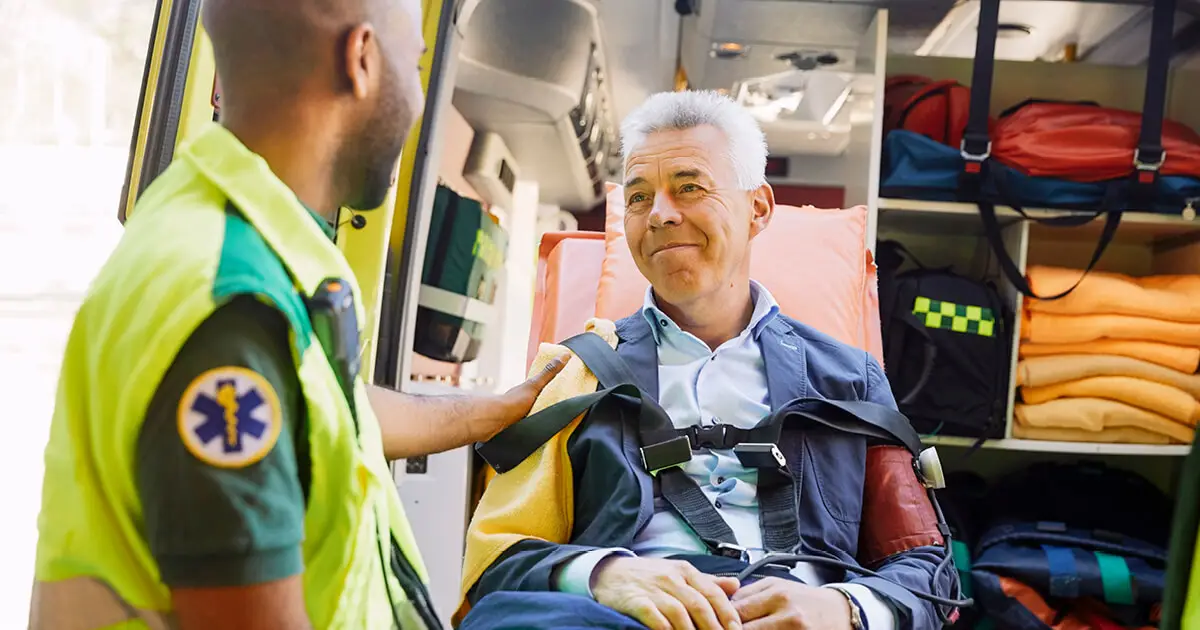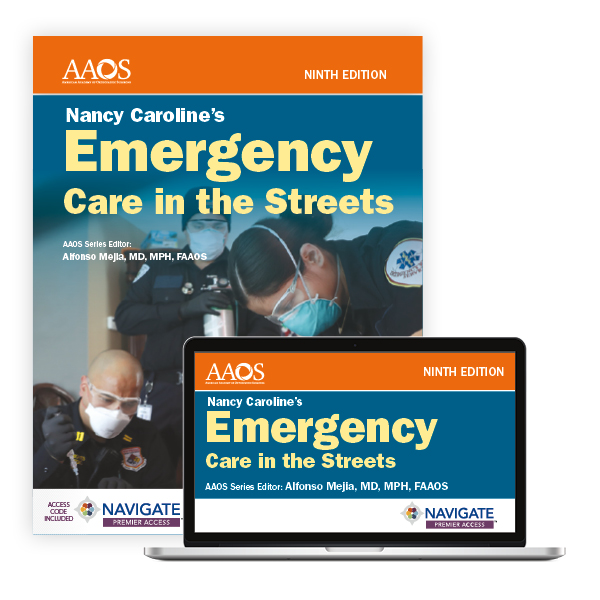How Instructors Can Help First Responders Improve Care for People Living with Disabilities

First responders are asked to make split-second decisions every day. The work is incredibly challenging and can take its toll on even the most seasoned veterans.
Compounding their challenge, Emergency Medical Services (EMS) personnel are often tasked with providing prehospital care for people with disabilities. This can be a problem, because people with disabilities require a different level of care compared to people without disabilities suffering a medical episode such as a heart attack, choking incident, or injuries sustained in a car crash, as examples.
Read on to learn how instructors can teach a few simple tactics to help EMTs and paramedics provide prehospital care for people with disabilities.
The Number of People Living with Disabilities Is Growing in the U.S.
The Centers for Disease Control and Prevention (CDC) recently reported that upwards of 28% of Americans face physical and cognitive challenges that impact their daily lives.
In its report, the CDC highlighted the challenges facing everyday people:
- Mobility: Those who have difficulty walking and climbing stairs make up 12.2% of people with disabilities.
- Cognitive: People who struggle with concentration and memory comprise 13.9%.
- Independent Living: About 7.7% of people with disabilities have difficulty performing routine chores and errands.
- Hearing: Deafness or difficulty hearing make up 6.2% of people with disabilities.
- Vision: Blindness and significant vision impairment affects 5.5% of people with disabilities.
Additionally, the number of people living with disabilities in the U.S. has steadily outpaced the country’s population growth. In 2000, just over 12% of Americans had some type of disability. By 2020, that figure had risen to 13.4%. But what makes this trend particularly concerning in terms of access to health care is that the total population increased from 281 million to 331 million, according to the U.S. Census Bureau.
One key challenge for EMS is the fact that, according to the CDC report, 1 in 4 Americans between the ages of 18 and 44 with disabilities do not have a designated health care provider. About 16% of people with disabilities from 18 to 44 years old with a regular health care provider have not seen their physician in more than a year due to cost. Those from ages 45 to 65 also did not participate in an annual physical at a high rate.
The Importance of Enhancing EMS Knowledge of Prehospital Care for People with Disabilities
Those who provide emergency medical services to vulnerable community members too often find themselves at a disadvantage. These first responders are tasked with making health risk assessments based on the evidence in front of them. When people with disabilities have cognitive, hearing, vision, or other conditions, communication becomes increasingly difficult. While these situations would seem to lead to poor health outcomes, recent studies indicate instructors can provide additional and ongoing training to improve prehospital care for EMS first responders.
The Cambridge University Press published the findings of a study that addressed prehospital care for people with hearing disabilities. The paper noted that a baseline expectation persisted that patients would possess the ability to communicate effectively. When this was not the case, underprepared EMS professionals were more likely to provide “suboptimal care or possibly wrong procedures that could harm the disabled person.”
Following a workshop that addressed ways to handle people with communication disorders, participants scored higher on knowledge assessments. The results show that training EMS professionals to better understand and evaluate the health needs of people with disabilities leads to better outcomes.
Michael Kaduce, MPS, NRP, is the Director of the Falck Health Institute and a chapter author of Nancy Caroline's Emergency Care in the Streets, Ninth Edition. He is one of the EMS experts working to solve this problem.
"EMS providers are an important part of their community and must be prepared to care for all the patients in their community, including those with disabilities,” he says. “With that in mind, the chapter ‘Special Patient Populations’ in Emergency Care in the Streets, Ninth Edition was completely overhauled to include better understanding of the most common disabilities an EMS provider will encounter, how best to communicate, and how best to care for patients with disabilities."
Tips for Improving Prehospital Care for People with Disabilities
Improving the awareness and knowledge of first responders about treating people with and without disabilities makes a significant difference. Research continues to indicate that ongoing instruction leads to more equitable outcomes. These are tips knowledge-seeking EMS personnel may find useful.
Emotional Distress
When a patient becomes emotionally distraught, the words “calm down” are usually counterproductive. Consider using psychological first aid strategies such as encouraging steady breathing together, and distracting the person with non-stressful things they can see, smell, or hear. The goal is to work with a patient to help them feel grounded so first responders can communicate more effectively.
Signs of Special Needs
There are some telltale signs that a patient may have special needs. The person may have an unusual gait, speak loudly, or engage in repetition. While these are not sure indicators, noticing possible signs of special needs prompts EMS professionals to make further assessments.
As noted in Caroline's ninth edition, EMS providers should be able to identify patients with Down syndrome, autism and autism spectrum disorder, hearing and visual impairment, cerebral palsy, cystic fibrosis, multiple sclerosis, muscular dystrophy, spina bifida, poliomyelitis, and traumatic brain injury during assessment and adjust their communication style and behavior accordingly.
For example, Kaduce recommends that EMS personnel who regularly provide care to patients with profound or total hearing loss should consider learning some sign language, carrying a medical sign language reference card that is available online from the California Department of Social Services, or writing on simple notepads or electronic devices. For patients with partial hearing loss, Kaduce recommends slow, deliberate, and sometimes repeated speech to communicate well.
Cognitive Disabilities
People with cognitive disorders often have difficulty concentrating and making eye contact and may come across as emotionally flat. It’s important to avoid asking patients to “focus” or “think harder” as such directives may exacerbate the situation.
Kaduce writes that patients with cognitive impairments may have trouble expressing the timing or relationship of specific events. He recommends using open-ended questions, asking the patient to repeat back or paraphrase information you've conveyed, and considering allowing the patient's caregiver to stay with the patient during a physical exam.
"An open mind and willingness to listen are often your greatest assets," Kaduce writes to paramedics. Enlisting the expertise of the patient's caregivers and learning from resources such as electronic medical reference materials and coworkers' experiences can help EMS professionals become better prepared for working with patients with disabilities in the future.
Nancy Caroline's Emergency Care in the Streets
Thoroughly reviewed by medical doctors and subject-matter experts, Nancy Caroline's Emergency Care in the Streets teaches students the technical skills required of today's paramedic while emphasizing other important professional attributes, including critical thinking, empathy, teamwork, communication, problem solving, and personal well-being.
Request More Information